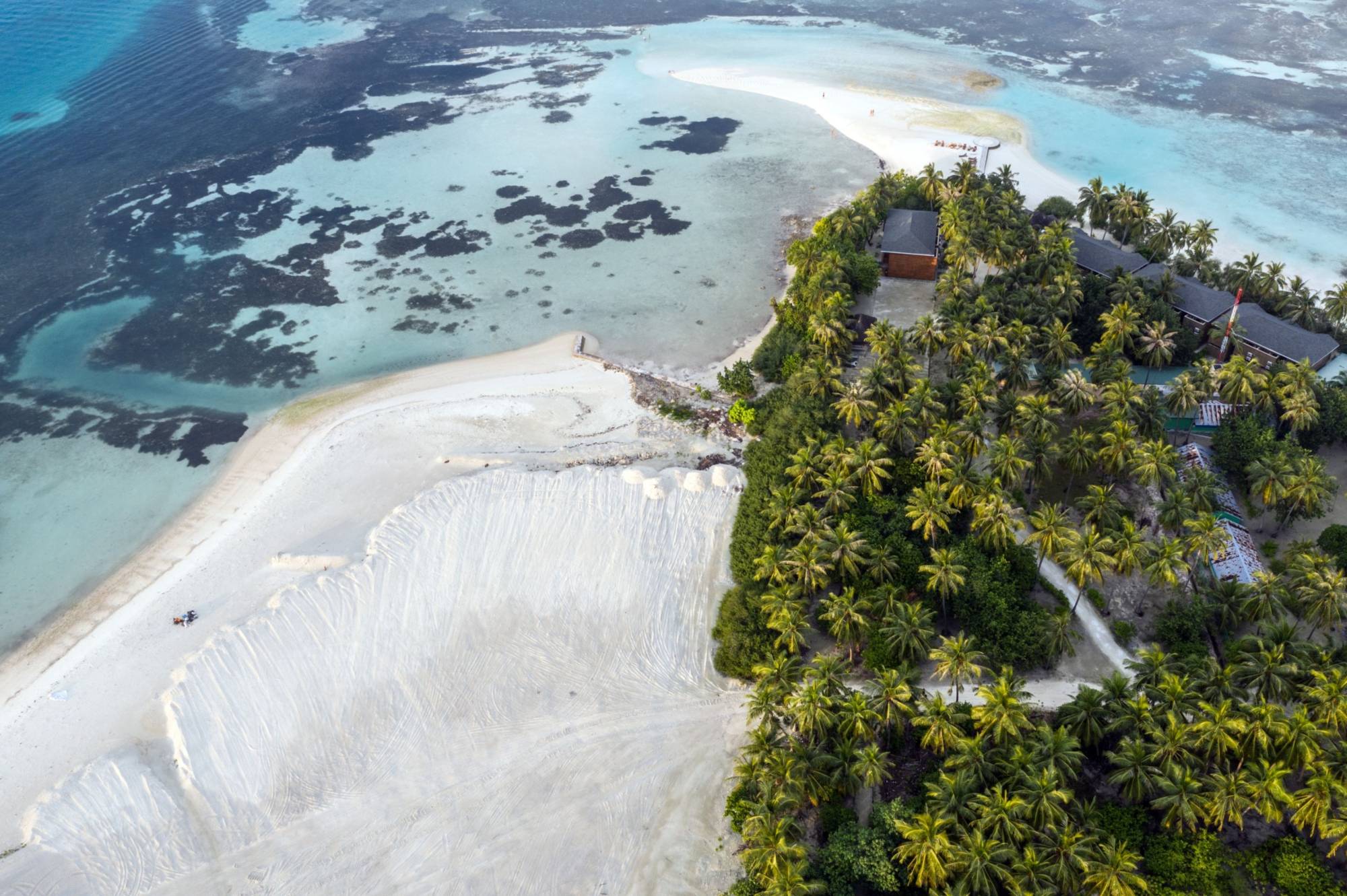Lanky palms dip over white beaches of powder-fine sand. Decadent villas hover above impossibly warm shallows. All around, sea and air merge into a uniform shade of blue.
These are the Fari Islands, the apex of tropical perfection situated near the northern end of the archipelago that makes up the Maldives, one of the ultimate vacation destinations for the world’s wealthiest. Made up of 1,200 specks of land sprinkled over hundreds of miles of Indian Ocean, the Maldives are in fact a series of 55 million-year-old limestone outcroppings perched atop a submerged volcanic plateau.
But these islands, and many others like them, are dying. They are on the front lines of a losing battle with global warming, one in which paradise has been transformed into a sun-drenched dystopia as whole nations face a watery obliteration. Indeed, the climate prognosis for the Maldives is bleak: According to NASA and the U.S. Geological Survey, by 2050 some 80% of the country could be uninhabitable. Even if the world’s nations suddenly pivoted away from fossil fuels, this country’s fate seems unavoidable.



















With your current subscription plan you can comment on stories. However, before writing your first comment, please create a display name in the Profile section of your subscriber account page.